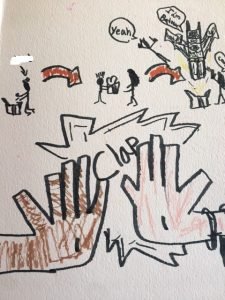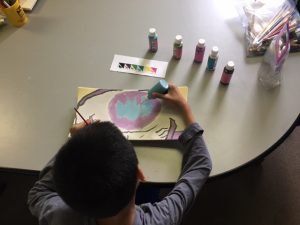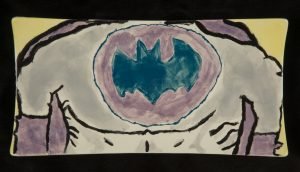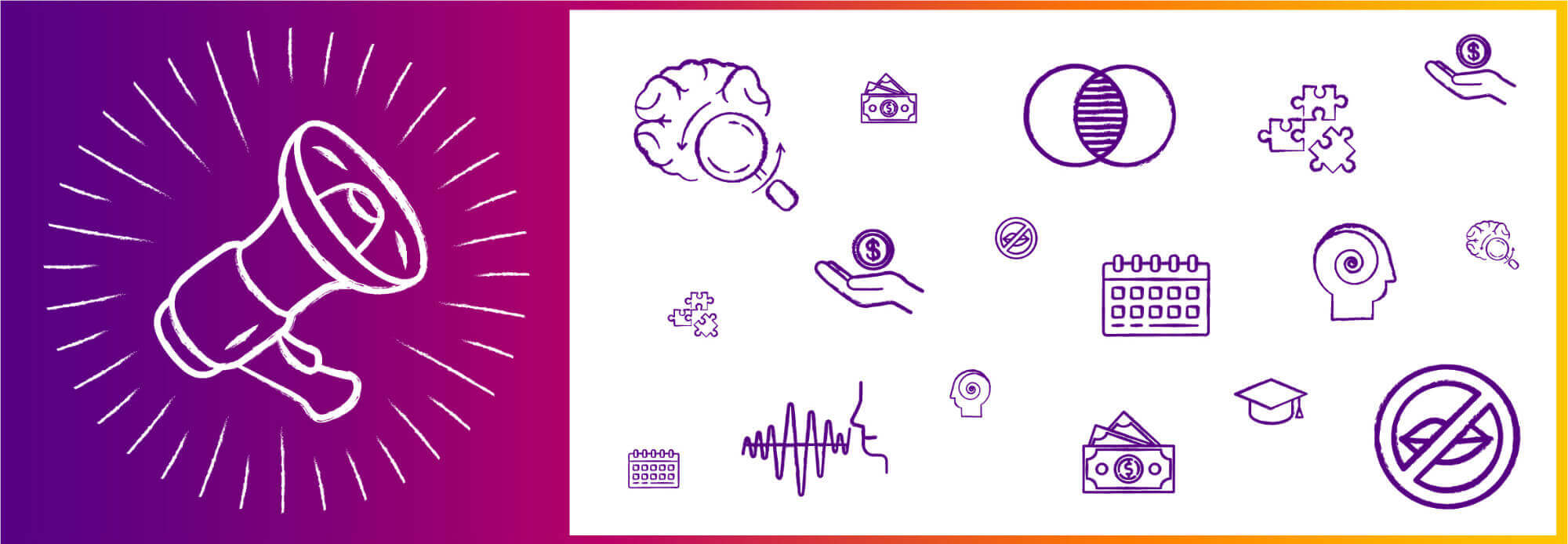This week we present the third and final installment in a series of blog posts previewing this year’s “Survivor Artist” platter for the Reach for the Stars Gala. In previous posts we’ve told you about art therapy at REACH (why and how we do it) and a special volunteer who plays a crucial role in making all of the artist platters happen for the Gala each year. This week we introduce you to the 9-year-old survivor artist himself, and he will tell you about his meaningful contribution to this year’s Gala. To protect his privacy, we have changed his name.
Alex’s mom first contacted REACH and began working with a Community Advocate several years ago. At that time, the mom reported experiencing physical and emotional abuse from her partner (Alex’s father). We know from what she’s told us that Alex (who was only 1 year old at the time) witnessed much of it, and may have experienced some himself. (It’s difficult to know for sure with a child too young to describe what’s happened.) He began coming to REACH as a client of our Child and Adolescent Therapy program at age 4. Alex was showing signs that we often see in children from abusive homes: he was hyperactive, having difficulty concentrating, and was not responding appropriately to social cues from other kids. According to his mom, he had a hard time controlling himself so he would act out…and then later express regret over what he had done. His mom’s Advocate connected her to REACH’s Therapy program.
Together with a therapist at REACH, Alex has worked on being able to identify his emotions. This richer emotional vocabulary has helped him understand that if he can recognize what he is feeling, he can then choose how to react. In therapy this is called developing “self-regulation techniques.” For example, he sometimes keeps a bean bag in his pocket, and by touching that and experiencing the sensation of it on his fingers, he can calm himself and stop to think before he reacts. A while back he reported a confrontation where he responded physically to taunts from another kid. Since then, using the bean bag in his pocket or other techniques learned in therapy, he knows he has options beyond physical response – he can walk away, he can talk to an adult.

Alex loves art. Specifically, he is a talented illustrator and really enjoys drawing comic strips. It’s almost as if he thinks in cartoons. His teachers in school recognize this, and recently they shared with our therapist Catalina that when he gets frustrated at school, they have him draw what is going on. Since a key part of REACH’s approach to our work is to be strengths-based, and to emphasize the tools and characteristics that survivors already have to help them face adversity, we celebrate Alex’s artistic talent every chance we get. His emotions will continue to evolve as he gets older, and he can explore these feelings through drawing and painting. Because he is genuinely talented, it offers him an opportunity to connect with people. This past summer, we worked with the Steve Glidden Foundation and the New Art Center in Newton to send him to art camp on scholarship.
When it came time to select an artist to do a platter for this year’s Gala, Alex seemed like the obvious choice. Catalina recognized that he was talented, and knew this project would be an opportunity to highlight something he’s really good at. It took a few sessions of working with Catalina and Pat for him to decide what he wanted to do. Eventually, he selected Batman…”because he’s a super hero.”

As we learned from Pat, working in this medium can be a challenge even for experienced artists. Alex is used to drawing and prefers working in black pencil, which is a very controlled medium. He initially wanted to draw a comic strip on the plate, which would not have worked well. It took him some time to master the use of the glazes we use for the platters and he struggled at first, but Pat was patient with him. Pat also worked with him to manage his expectations – since the plates always look different after they are fired in the kiln and she wanted to make sure he understood that.
The entire project took about four to six sessions of 60 to 90 minutes each. Catalina says, “While he was working, we talked. We talked about cool things that Batman has done. I thought it was interesting that he emphasized that Batman has a lot of friends and cool gadgets and is strong. [Alex] has a slighter build…but his Batman is a very muscular Batman.” These sessions were not meant to replace his art therapy – so the conversation was not too deep, and they weren’t trying to get him to process anything. It was just small talk while they worked.
Flashes of normalcy like this are something we might take for granted if childhood trauma has not been part of our experience. As well-meaning adults, we are tempted to read a deeper meaning into Alex’s choice of Batman (a resilient individual who overcomes childhood tragedy) as a subject. But the reality might be that 10-year-old boys often just like superheroes. A chance to do something that he’s good at, and be celebrated, and talk about superheroes, is something that might not have seemed possible to Alex and his mom when they were experiencing the worst of the abuse. Alex’s Batman plate stands as a reminder of the capacity that all survivors have to do what they’re good at and live normal lives beyond domestic violence.

To view this and other special platters for this year’s Reach for the Stars Gala, check out our the auction site which is already live! If you don’t yet have your tickets, you can purchase them here.





